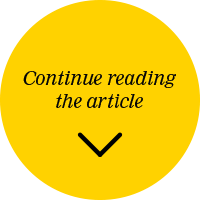-
Mercedes Agüero
 maguero@nacion.com
maguero@nacion.com -
Hassel Fallas
 hassel.fallas@nacion.com
hassel.fallas@nacion.com -
Pablo Robles y Marco Hernández
 infografia@nacion.com
infografia@nacion.com
When buying gasoline, Costa Rica is the country which gets the best import prices in Central America; however, when sold to the final consumer, it becomes the most expensive one in the region.
Upon arrival at Port Limon, each 159-liter barrel bought in the United States cost $118.32 as an average last year. That is, $0.74 per liter, the lowest price in the Isthmus. That import cost represented only 53% of the final price to the consumer and was possible because RECOPE is the sole importer to the country and, thanks to the high volume it purchases, gets the best import prices in the region.
However, the high taxes, subsidies between products, and RECOPE’s own costs, wipe away the cheap buy and make of the price the highest in the region.
Thus, in 2013, the $0.74 per imported liter became $1.40 when paying at gas stations (¢709, mean price per liter of regular and super gasoline). The contrary took place in Panama, where the cost per barrel from the free zones was $125.02 ($0.79 per liter). However, when Panamanian drivers fill their tanks, they pay $1.07 per liter, the lowest price in Central America.
The results are part of an investigation by La Nación which makes evident why Costa Ricans pay for the most expensive fuels in the region. This means compiled official figures for taxes, import and bill of gasoline for 2013, at the ministries of Energy, statistics institutions, central banks, regulatory bodies and other responsible institutions in each country.
Also recorded are data from vendor associations and business chambers to approximate the distribution margins in the nations where that information is not wholly public.
Only in Nicaragua it was impossible to obtain those final figures. “That’s a secret and nobody is going to tell you, much less when you are dealing with semi-official businesses,” warned Alfredo Cuadra, chairman of the Nicaraguan Petroleum Trade Association.
Taxes and Subsidy. The cost per liter in Costa Rica starts becoming high with tax, the highest in the Isthmus. Last year, the tax was $0.45 per liter, as an average, which equals 32% of the global amount.
The revenues from this tax represent close to 2% of the national production (¢390 billion in 2013), funds which mostly go to the National Budget to pay for infrastructure, education, or welfare programs. They are so relevant that the Vice-Minister for Revenues at the Ministry of Finance, Fernando Rodriguez, stated: “We cannot lower that tax unless we can compensate by some other means.”

